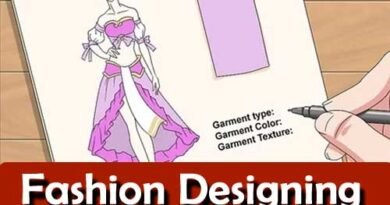Painting on Fabric
Painting on fabric is a versatile and expressive technique that allows fashion designers to create unique and personalized garments and accessories. This class note explores the art of painting on fabric, including various painting techniques, materials used, design considerations, historical context, contemporary applications, and practical tips for fashion designers.
Historical Context

Painting on fabric has a rich history, dating back centuries across different cultures. In ancient times, textiles were adorned with hand-painted motifs and patterns using natural dyes and pigments derived from plants and minerals. In the Renaissance era, elaborate designs were painted on fabrics for royal garments and ceremonial attire. The technique evolved with the advent of synthetic dyes and paints, enabling more vibrant colors and intricate designs in modern fashion.
Materials and Tools
1. Fabric Paints:
- Acrylic Fabric Paints: Versatile, durable, and available in a wide range of colors. Suitable for most fabric types and provides good coverage.
- Fabric Spray Paints: Used for creating gradient effects or covering large areas quickly.
- Watercolor Fabric Paints: Offer a more fluid application and are ideal for creating soft, translucent effects.
2. Brushes and Applicators:
- Fine Detail Brushes: For intricate designs and precise lines.
- Foam Brushes: Used for applying paint evenly over larger areas.
- Sponges: Provide texture and can be used for blending colors or creating unique patterns.

3. Fabric Mediums and Fixatives:
- Fabric Medium: Mixed with acrylic paints to improve flexibility and adhesion to fabric fibers.
- Fixatives: Heat-set or ironed onto fabric to make the paint wash-resistant and durable.
Techniques of Fabric Painting
1. Direct Painting:
- Freehand Painting: Applying paint directly onto fabric without stencils or guides, allowing for spontaneous creativity.
- Block Painting: Using blocks or stamps to create repeated patterns or motifs.
- Sgraffito: Scratching or etching into painted layers to reveal underlying colors or textures.
2. Resist Techniques:
- Wax Resist: Applying wax to fabric before painting to create a resist effect, often used in batik techniques.
- Masking: Using tape or stencils to mask off areas from paint, creating sharp edges and clean lines.
3. Stencil Painting:
- Stencil Designs: Using pre-cut stencils to apply intricate patterns or shapes onto fabric.
- Layering: Overlapping stencils to create depth and complexity in designs.
Design Considerations
1. Color Theory: Understanding color combinations, contrasts, and harmonies to evoke desired emotions or themes in designs.
2. Fabric Selection: Choosing fabrics that are suitable for painting and considering how fabric texture and weave affect the final appearance.
3. Composition: Balancing elements like scale, spacing, and focal points within the design to create visual interest and coherence.
4. Washability and Durability: Using appropriate fixatives or heat-setting methods to ensure paint remains vibrant and wash-resistant.

Applications in Fashion Design
1. Couture and High Fashion:
- Custom Garments: Designers create one-of-a-kind pieces with hand-painted motifs or personalized designs for clients.
- Runway Shows: Painted fabrics feature prominently in avant-garde collections, showcasing artistic expression and innovation.
2. Ready-to-Wear and Mass Market:
- Limited Edition Collections: Brands incorporate hand-painted fabrics into limited-edition lines, offering consumers unique pieces with artistic flair.
- Printed Fabric Replicas: Mass production techniques replicate hand-painted designs using digital printing technologies for broader accessibility.
3. Accessories and Textiles:
- Bags and Shoes: Painted designs on accessories add a personalized touch and artistic value.
- Home Decor: Painted fabrics used in upholstery, curtains, and decorative textiles enhance interior spaces with bespoke designs.
Contemporary Trends and Innovations
In contemporary fashion, painting on fabric continues to evolve with advancements in materials and techniques:
1. Mixed Media: Combining fabric painting with embroidery, appliqué, or beadwork to create multidimensional textures and effects.
2. Sustainable Practices: Using eco-friendly paints, upcycling old garments with painted designs, and promoting ethical production methods.
3. Digital Integration: Digital tools and software aid in designing and reproducing intricate painted patterns and motifs on fabric.

Conclusion
Painting on fabric is a dynamic and expressive technique that empowers fashion designers to push creative boundaries and create truly unique pieces. By mastering various painting techniques, understanding design principles, and embracing innovation, designers can leverage fabric painting to craft garments and accessories that resonate with individuality and artistic vision. As the fashion industry continues to evolve, fabric painting remains a timeless and versatile medium for creating wearable art that captivates and inspires.
